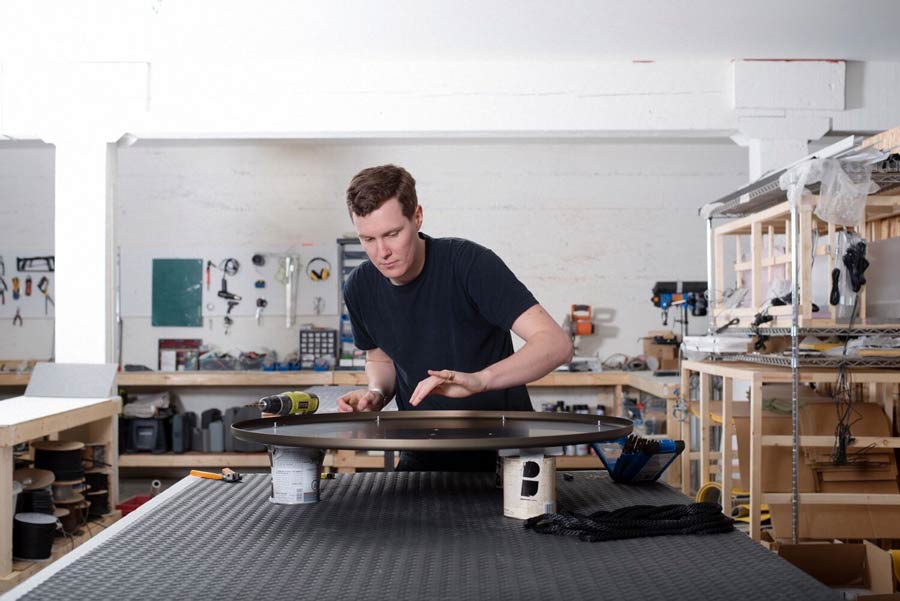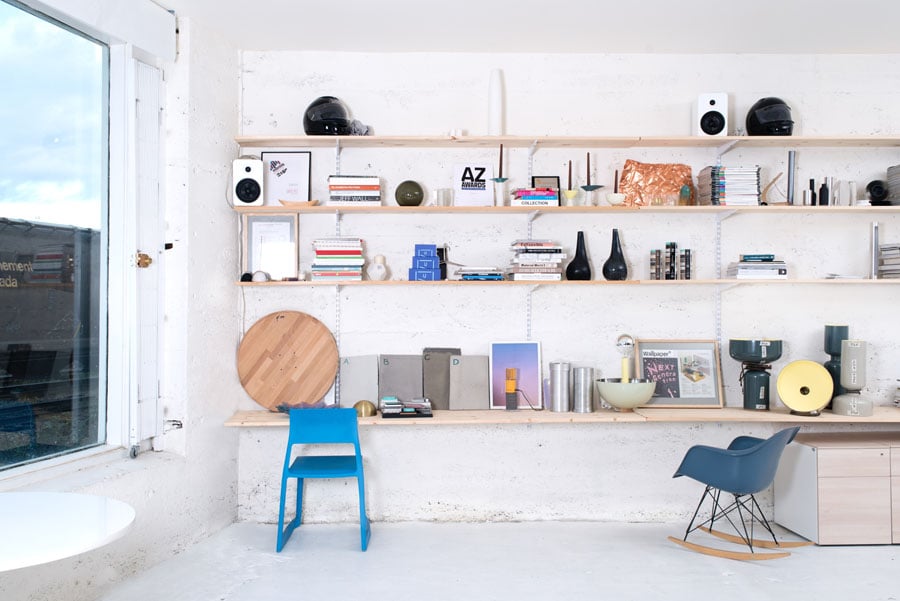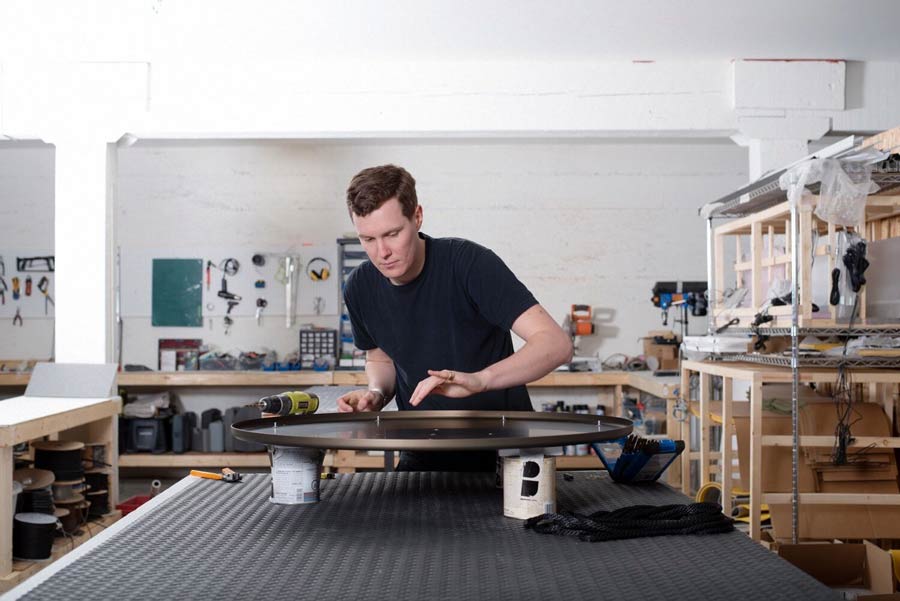
October 6, 2017
New Talent 2017: Lukas Peet’s Simple Lighting Designs Betray Complexity
With an approach that synthesizes pragmatism and whimsy, Peet’s designs reconsider the particularities of lighting and how it fills a space.

Even though they work at diverse scales, the five emerging practices that we have selected this year as Metropolis’s New Talent 2017 share some fundamental characteristics. They are all open to influences from other places and professions, engage with new technologies and materials, and collaborate with others at the cutting edge of their field. Whether they’re creating architectural installations in London, lighting designs in Vancouver, start-up offices in New York, a hospital in Zambia, or Shaker-inspired objects in Oregon, these practitioners have what it takes to move architecture and design forward.
Growing up in Canmore, Alberta, a rugged mountain town in the heart of the Canadian Rockies, designer Lukas Peet saw that in the natural world, design isn’t a luxury: It’s a matter of survival.
“The climate is very extreme, and everything has to struggle to be there,” says Peet. On a trip to the nearby Columbia Icefield, he saw 300-year-old trees that were barely a few feet tall and had branches only on one side—an adaptation that allowed them to endure the area’s extreme wind and ice. “In a design sense, everything is refined to the smallest increment.”
Now based in Vancouver’s trendy (and far more temperate) Railtown neighborhood, Peet brings the same rigor and pragmatism to his own designs, whether they’re carefully considered LED fixtures for his lighting company ANDlight, unified lighting and racking systems for retail interiors, or 3D-printed product prototypes for his own studio, Lukas/Peet Design. Anything nonessential gets stripped away, leaving work that at first blush can seem deceptively simple—but reveals its understated complexity on closer inspection.
The Spotlight Volumes solve a perennial lighting dilemma by casting light both up and down, and each fixture comprises four distinct pieces that can be mixed and matched to create 16 unique styles and effects. The cord, instead of being an afterthought, visually joins the elements. “A couple of my designs celebrate the cord, because you can’t always hide it,” he says. “It’s a bit more playful, more fun.”
The Button series uses custom LED panels that evenly distribute light across a circular face, which can be easily tilted using a simple rope system, while the Orbit fixtures play with the idea of planets revolving around the sun.

The Slab Light series uses a special luminous acrylic to provide long, even illumination, while dense felt adds soundproofing and visual division. “A lot of modern spaces are flat, hard, and smooth, and they just bounce the sound everywhere,” says Peet. “The idea was to have a large presence but also very minimal, so it’s not overwhelming in the space.”
As a child, Peet spent countless afterschool hours tinkering in his father Rudi’s jewelry studio; he later attended the prestigious Design Academy Eindhoven in the Netherlands. After graduating in 2009, Peet returned to Canada and launched Lukas/Peet Design; in 2013, he cofounded ANDlight with Caine Heintzman and Matt Davis “with the intent to challenge existing standards in lighting.”
Unabashed about his mass-market ambitions, Peet says the economics of his designs—how they might be developed, produced, shipped, priced, and sold—are key considerations, and just as essential as their look and function. He keeps all of the production in Canada, in large part so he can work directly with manufacturers, meticulously refining each product.
“It’s very studied, strategic, controlled work. But the thing that impresses me more than the individual pieces is his courage and perseverance and hard work,” says Vancouver- and Berlin-based designer and mentor Omer Arbel. “He’s taken on the full scope of what it means to start a company, to operate a company, to manufacture and ship, to sell, to create. It’s amazing.”
So far, it has also paid off. At just 30 years old, Peet has won multiple awards for his interior design of the Livestock apparel store in Vancouver, as well as for lighting and industrial designs. Still, Peet’s creations meld pragmatism with an unmistakable sense of whimsy and play. For him, design is not only about making beautiful things; it’s about advancing them.
“Everything has to have a unique little angle. So I might think, I would like to design a chair, but I won’t pursue it until I find that one unique clever thing that makes it different,” says Peet. “I have no interest in stylizing anything. I could design products that look nice all day. But if you’re a musician or an artist or a designer, your whole life should revolve around creating new things—not copying someone else. That’s the whole point of being creative, to create.”
You can find all our New Talent 2017 profiles here!












